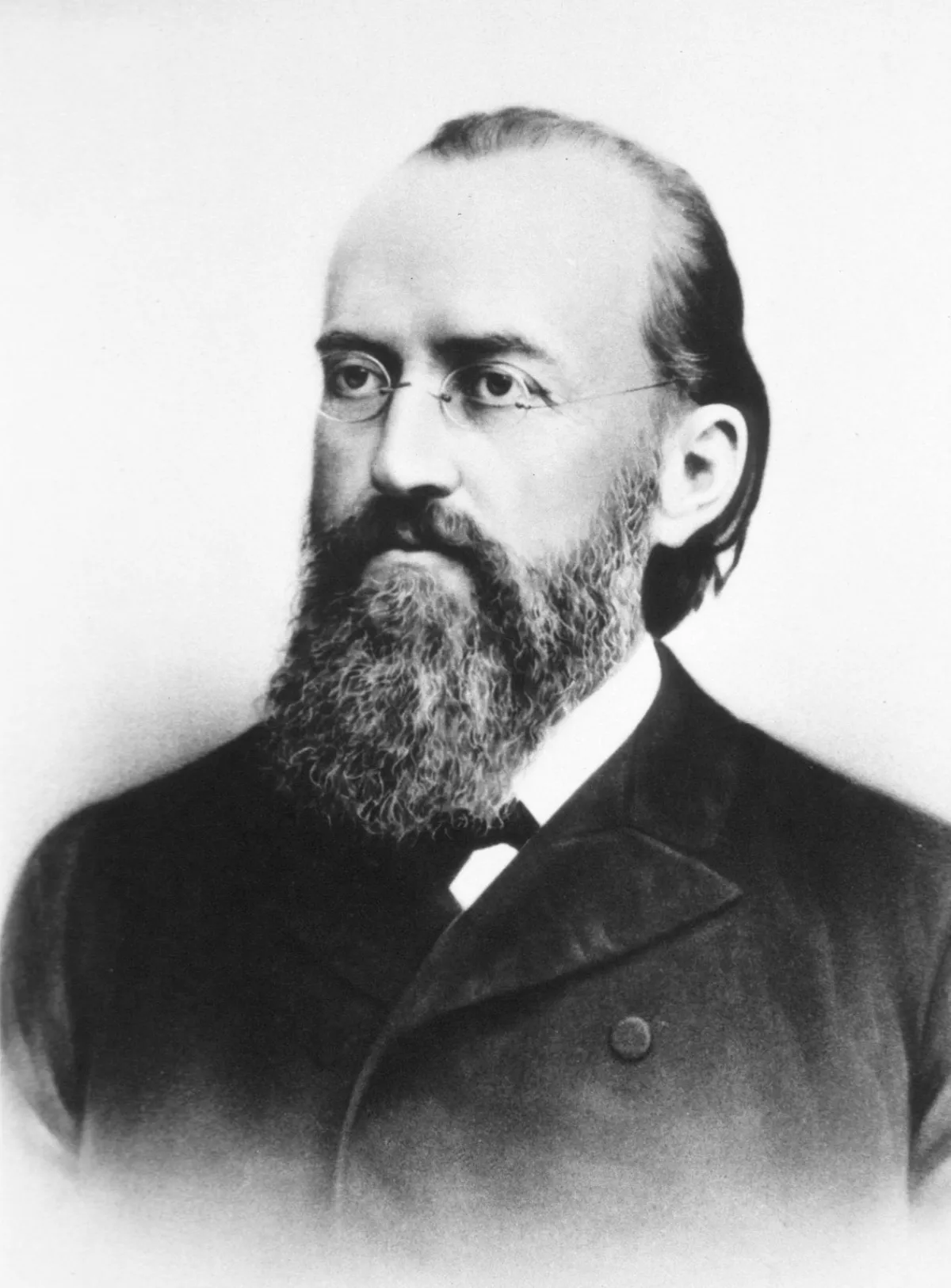 1.
1. Karl Ewald Konstantin Hering was a German physiologist who did much research in color vision, binocular perception, eye movements, and hyperacuity.

 1.
1. Karl Ewald Konstantin Hering was a German physiologist who did much research in color vision, binocular perception, eye movements, and hyperacuity.
Ewald Hering probably grew up in a poor family, son of a Lutheran pastor.
Ewald Hering attended gymnasium in Zittau and entered the university of Leipzig in 1853.
Ewald Hering seems to have applied for studying under his direction but was rejected, which might have contributed to his animosity towards Hermann von Helmholtz, Muller's protege.
Ewald Hering went as far as ridiculing Helmholtz's mathematical errors in his derivation of the horopter.
Ewald Hering was appointed professor of physiology at the military academy of Vienna until 1870.
Ewald Hering retired in 1915 and died of tuberculosis three years later.
Ewald Hering studied a broad range of subjects in vision, among them his outstanding studies on binocular vision.
Ewald Hering derived, almost simultaneously with Helmholtz, the theoretical shape of the horopter.
Ewald Hering is well known for his Law of Visual Direction which describes the perceived egocentric direction of an object from an observer.
Ewald Hering did seminal work on what we now call hyperacuity: spatial resolution in certain visual tasks that exceeds visual acuity by about an order of magnitude.
Ewald Hering argued that, by a mechanism of integration across small eye movements, the location information signalled by the involved receptors is coded to a much higher precision than would be possible by a single receptor, an explanation that still holds up today.
Ewald Hering developed the Hering's law of equal innervation to describe the conjugacy of eye movements in animals.
Ewald Hering's law predicts that because the eyes must always move by equal amounts, both eyes should move in the new binocular direction of the target, then move in opposite direction to adjust vergence to that of the target.
Ewald Hering disagreed with the leading theory developed primarily by Thomas Young, James Clerk Maxwell and Hermann von Helmholtz.
Ewald Hering instead held that the visual system works based on a system of color opponency.
Ewald Hering's evidence stemmed from color-adaptation experiments and the linguistic observation that certain color names cannot be combined into one.
Ewald Hering made significant contributions to the field of physiology as well as psychology.
Ewald Hering showed the Traube-Hering reflex, or that inflating the lungs triggers an acceleration of the heart.
Ewald Hering first suggested the idea of organic memory in an 1870 lecture for the Imperial Academy of Science in Vienna.
Ewald Hering took influence from the idea of inheritance of acquired characteristics and suggested that memories could be passed on through generations by germ cells.
Ewald Hering spent most of his life arguing violently with Helmholtz.
The controversy was not only scientific but philosophical; Ewald Hering was a nativist, Helmholtz an empiricist.
Helmholtz came from a higher social class and was always considered a prodigy, whereas Ewald Hering had to go through a harder time in his early career.